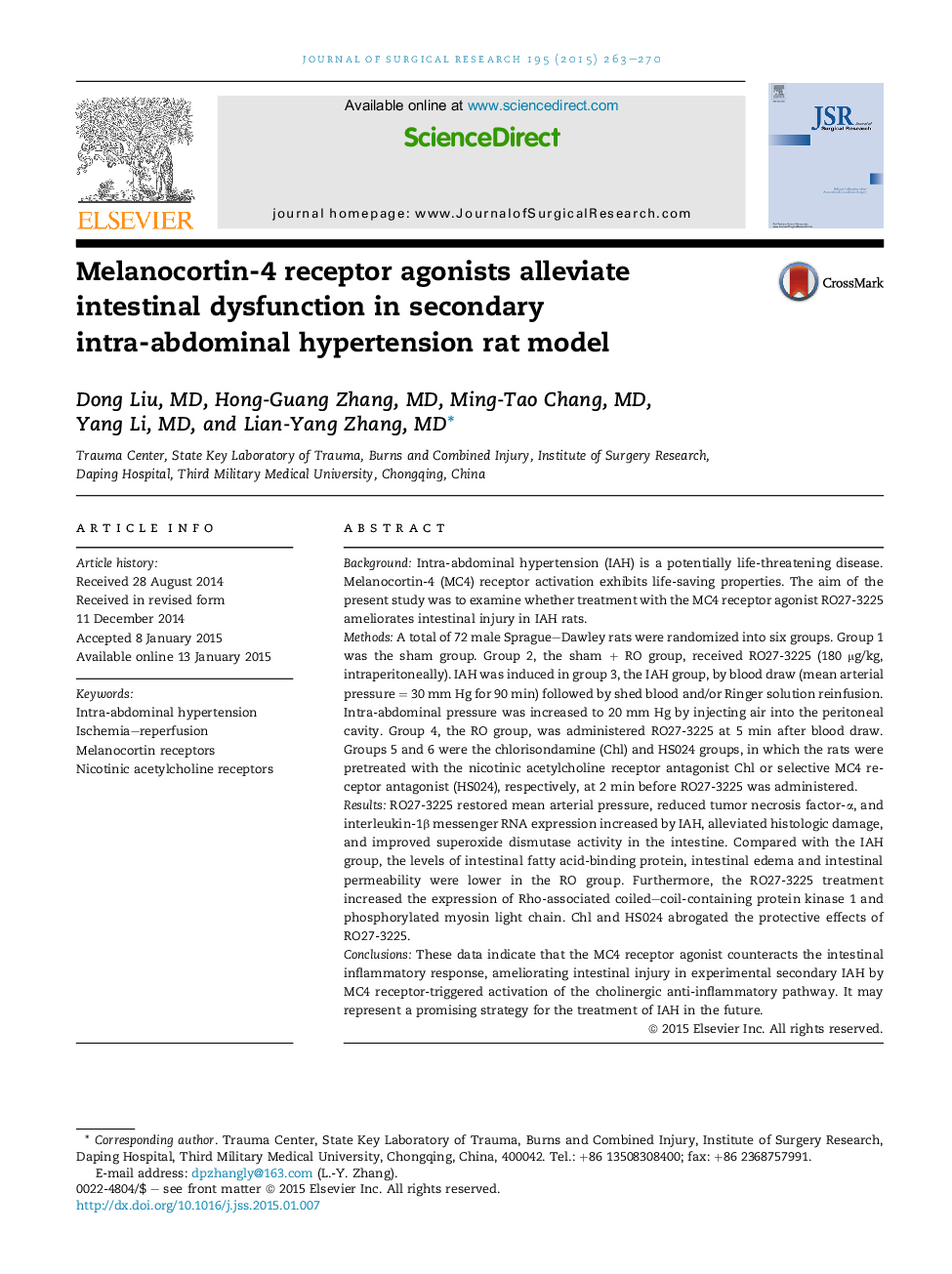| Article ID | Journal | Published Year | Pages | File Type |
|---|---|---|---|---|
| 4299897 | Journal of Surgical Research | 2015 | 8 Pages |
BackgroundIntra-abdominal hypertension (IAH) is a potentially life-threatening disease. Melanocortin-4 (MC4) receptor activation exhibits life-saving properties. The aim of the present study was to examine whether treatment with the MC4 receptor agonist RO27-3225 ameliorates intestinal injury in IAH rats.MethodsA total of 72 male Sprague–Dawley rats were randomized into six groups. Group 1 was the sham group. Group 2, the sham + RO group, received RO27-3225 (180 μg/kg, intraperitoneally). IAH was induced in group 3, the IAH group, by blood draw (mean arterial pressure = 30 mm Hg for 90 min) followed by shed blood and/or Ringer solution reinfusion. Intra-abdominal pressure was increased to 20 mm Hg by injecting air into the peritoneal cavity. Group 4, the RO group, was administered RO27-3225 at 5 min after blood draw. Groups 5 and 6 were the chlorisondamine (Chl) and HS024 groups, in which the rats were pretreated with the nicotinic acetylcholine receptor antagonist Chl or selective MC4 receptor antagonist (HS024), respectively, at 2 min before RO27-3225 was administered.ResultsRO27-3225 restored mean arterial pressure, reduced tumor necrosis factor-α, and interleukin-1β messenger RNA expression increased by IAH, alleviated histologic damage, and improved superoxide dismutase activity in the intestine. Compared with the IAH group, the levels of intestinal fatty acid-binding protein, intestinal edema and intestinal permeability were lower in the RO group. Furthermore, the RO27-3225 treatment increased the expression of Rho-associated coiled–coil-containing protein kinase 1 and phosphorylated myosin light chain. Chl and HS024 abrogated the protective effects of RO27-3225.ConclusionsThese data indicate that the MC4 receptor agonist counteracts the intestinal inflammatory response, ameliorating intestinal injury in experimental secondary IAH by MC4 receptor-triggered activation of the cholinergic anti-inflammatory pathway. It may represent a promising strategy for the treatment of IAH in the future.
